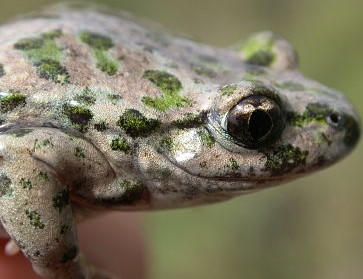Last February 19th, after four weeks of fieldwork across the different Doñana wetlands (in 24 localities), ICTS-RBD's Long-Term Monitoring Team completed the winter amphibian surveying. It has been a great winter for amphibians and it has coincided with the breeding period of most amphibian species. The ICTS-RBD's team has detected more than 7,000 individuals of 11 species found in Doñana, of which five are Iberian endemics.
This winter, the most abundant species was the Natterjack toad (Epidalea calamita). Fairly abundant rainfall levels resulted in numerous small, shallow-ponds, hosting a great number of amphibian eggs and larvae. Regarding the common toad (Bufo spinosus), the team has detected many amplexus (the copulatory embrace by which male grasp females and fertilizes her eggs) despite its short-breeding period. Other species very abundant has been the Iberian spadefoot toads (Pelobates cultripes), in more than half of the sites surveyed – including all different life-stages: eggs, small and large larvae, and adults. In contrast, Iberian midwife toad (Alytes cisternasii), a species usually rare in Doñana, was found only in one of the localities surveyed – a stream in the northernmost part of the Park.
Among the newts (Urodela), the Iberian ribbed newt (Pleurodeles waltl) was very abundant in both the marsh and the sandy ponds. In the marsh, it was the only newt species detected. This environment, however, is a great habitat for the Iberian parsley frog (Pelodytes ibericus; see picture), whose calls can be heard intensively when marsh starts flooding.


 Las altas temperaturas están provocando que las lagunas y las marismas de Doñana pierdan agua rápidamente
Las altas temperaturas están provocando que las lagunas y las marismas de Doñana pierdan agua rápidamente




